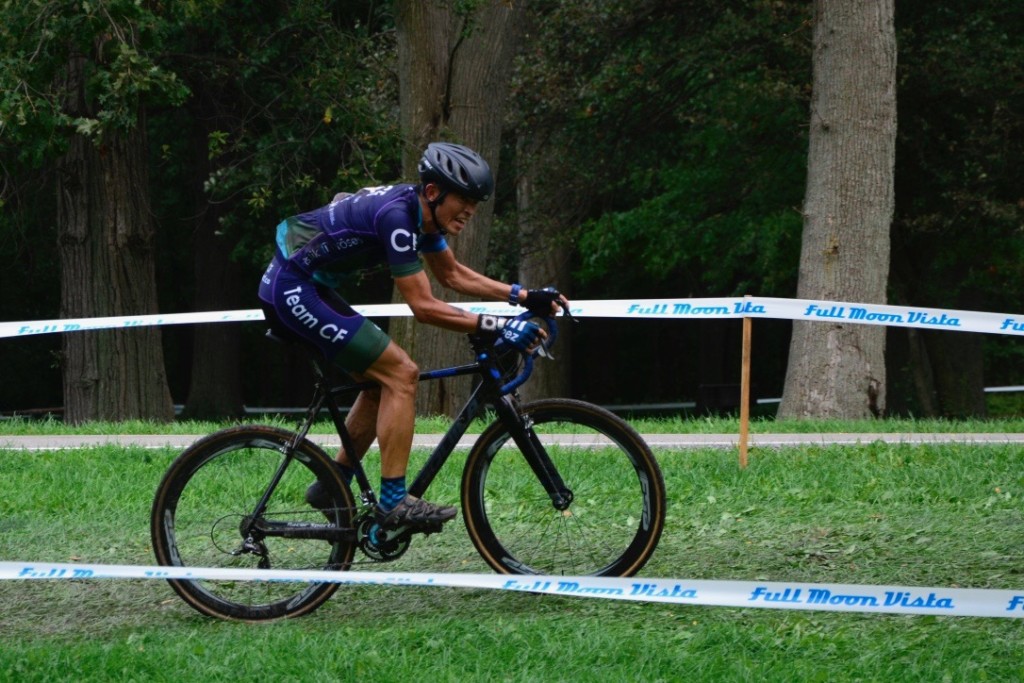
Many of us track our power numbers with an interest in achieving max power output and hitting the #BOOM of a breakthrough effort. Tracking these max efforts is indeed important, and it is true that ultimately we are aiming to get Peak Power (PP), High Intensity Energy (HIE), or Threshold Power (TP) as high as possible. However, when and how often you can hit these efforts is equally important.
For example, consider:
- Can you hit those values at the end of a 3 hr hilly ride?
- Can you hit those values over and over again, over the course of a ride?
Key to being able to achieve the above is to be repeatable with your efforts. It’s great if you can hang with the main group after the first selection. However, if you’re so gassed that the next surge spits you out the back, you’re not going to be there fighting at the finish. And that’s exactly how many races – and even aggressive club rides – play out, with repeated attacks throughout the entire race or ride.
The demands of repeatability also play out in a typical pro race, where there is often a very hard initial 30-60 min as the main breakaway fights to become established. Then there comes a long period of several hours where everybody gets progressively more tired, but it’s more steady. Then the final hour comes and the decisive hammer gets dropped on the very tired riders. What separates the winners, like Valverde, Bardet, and Woods at the recent World Champs in Innsbruck, is the incredible effort that they can still sustain after >6 h of hard racing, on that final “hell” climb. Elite amateurs “might” be able to come near those power numbers when completely fresh at the start of a ride, but it’s another thing to hit them repeatedly or at the end of a race.
My Personal Hell
Personally, I hate time trialing, and have a really hard time getting motivated for regular 20 min, 5 min TTs for testing. It’s also not the kind of effort that I really do in my cyclocross and gravel races. One of the big advantages of Xert is that it removes the need for traditional testing, like a 20 min TT, to estimate a Functional Threshold Power as a fitness parameter. Ride hard enough to drain your MPA, and the algorithms will automatically recalculate PP, HIE, or TP as appropriate. This can be done during solo rides, group rides, club races, or specific workouts that are relevant to your own riding goals.
In addition to everyday breakthroughs, I like to supplement these with a specific test effort that is more relevant to my own riding goals. I like to test my ‘repeatability’ using a workout first designed by Norwegian scientist Bent Rønnestad as a test effort. This consists of 3 sets, each one comprising 13 repetitions of 30 s max effort with 15 s recovery at about 50% of threshold power. Try it – it’s hellish.
Analyzing the workout (you can find under “Cheung CX – Ronnestad”) you will see that it has a “Breakaway Specialist” (5 min) focus, which is right in the range of ~4:30 focus of my typical CX or gravel races. It also has a Pure specificity for very concentrated emphasis on this focus. You will also see that it is incredibly intense, with a Difficulty Score of 168 leading to a 5-star rating. You definitely need to be mentally ready and physically rested for this workout.
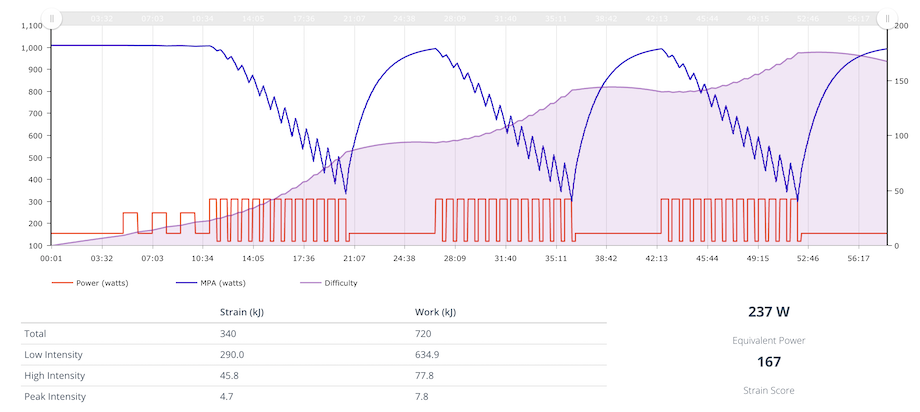
I do this workout regularly throughout the year indoors and outdoors, but I especially like to ensure that I do it indoors at least several times throughout a season. I do it with the ergometer on free mode (i.e. I determine intensity rather than the trainer requiring a specific wattage). Or, I do them riding in Zwift on the flattest course possible so that I don’t suddenly get slammed by a 10% wall or spinning out downhill. I do NOT recommend doing them under ‘trainer control’ on Xert or Zwift, because you want to do them as best efforts rather than have the wattage controlled for you.
Let’s take a look at the three indoor Rønnestad rides I did this year on Zwift and see what patterns and insights we can gain.
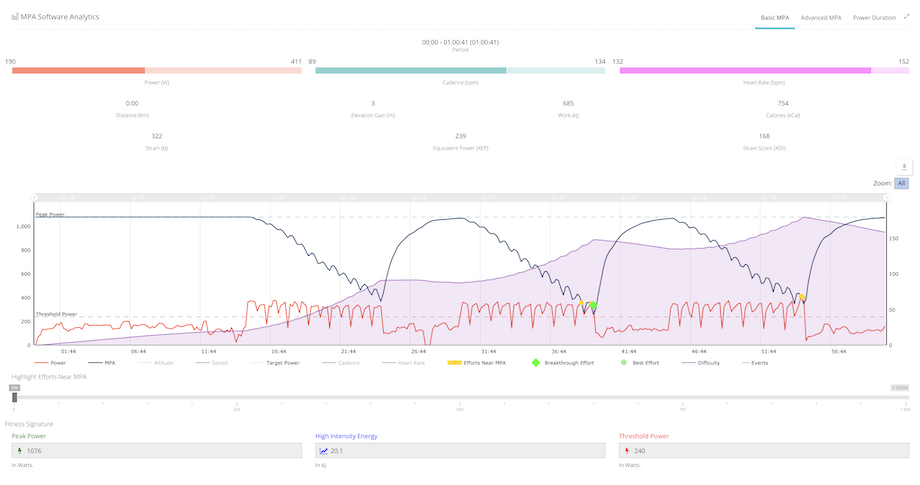
My main goal of the season were the spring gravel races in upstate NY and Ontario, culminating with Paris-Ancaster at the end of April. Therefore, this effort February 17 was right about middle of my long build from early December. All of my training was indoors thanks to the Canadian winter. From an initial December starting Training Load (TL) of 47, I had systematically built TL up to 85.
Beyond the raw numbers, look at each of the three sets themselves. They were extremely repeatable and similar in how much I could drain my fatigue (Maximum Power Available – blue line). Each set drained my MPA fully to the point where it matched my actual current power (red line), forcing the Xert model to repeatedly update my signature. The wattage for each set, whether a pure average or normalized, were very similar at 256 – 259 W.
The similarity of the three sets tells me that I am already developing a very deep base of aerobic fitness, such that I can recover and drain myself multiple times. This bodes very well for being able to perform hard efforts towards the latter end of rides or races, which is usually where the winning moves are made.
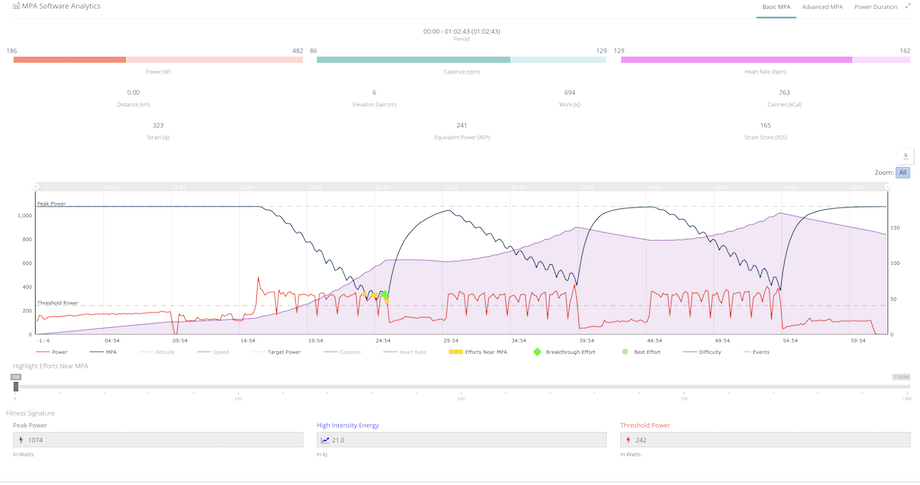
My test mid-April was in the final phase before my peak event on April 29. Training remained very consistent and I had built up my Training Load to 96. I had done three gravel races by this point and performed well in all of them.
As in February, my three sets were a bit higher in terms of wattage (260-270 W) and similar in terms of the level at which they drained my MPA. So I’ve managed to increase my intensity of effort while maintaining my repeatability. Perfect! And it resulted in my performance in Paris-Ancaster (70 km of road, double/singletrack, and MUD) well exceeding my ideal target of top 200 overall (ended up 177th) when my previous best had been 263rd.
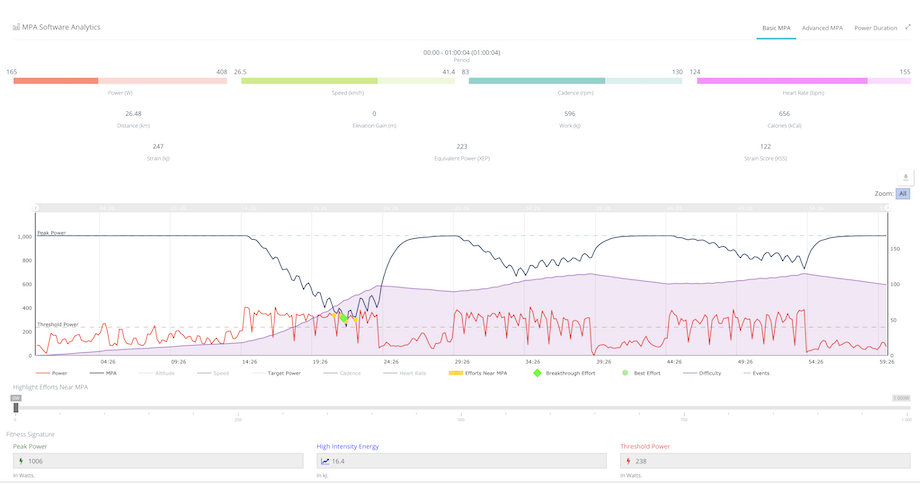
Now, to a test effort in the fall. My training had been quite sporadic over the late summer and into fall, with lots of weeks off due to moving across Canada for my sabbatical, getting sick for a couple of weeks, etc. My TL had dropped to 70-75 from September.
The file from this day starkly contrasts with the two earlier tests. The first set maxed out at 254 W average, then the wheels fell off in the latter two sets, with wattages of only 228 and 225 W. As plainly visible, despite my high perceived effort, MPA was minimally drained in those two latter sets. Overall, intensity dropped dramatically compared to Feb/April, and repeatability was non-existent.
Another interesting thing to note. I had set my Decay setting to “No Decay” since September, and my Fitness Signature was PP 1006W, HIE 16.2kJ, TP 238W. I have not achieved any actual breakthrough efforts since early August. How well does this No Decay estimate my signature?
Well, I ended up with a Bronze breakthrough, with HIE the only component changing, and that was only from 16.2 kJ to 16.4 kJ. Pretty bang-on for two months of tracking!
Lessons Learned
What this October tests tells us is the importance of sustaining training. Even though Threshold Power in February and October were similar (240 and 238 W), the drop in Training Load just did not permit hard efforts to be repeated. So, overall I was much more fit in February than October.
You often hear the phrase “matches to burn” when it comes to racing. The more repeatable your fitness, the more matches you can burn. Back in February and April, I could race knowing that I could dig deep multiple times and late into a race. By October, I would have to race completely differently, knowing my box of matches was running much lower.
Note that this pattern of decreased fitness often occurs during CX season. You often hear of the pros skipping a week of racing in favour of going south for a dedicated training block. That’s because, with double races each weekend from October – February, the high intensity racing forces multiple days of recovery, such that minimal actual training is possible in-season and deep aerobic fitness disappears.
Summary
The big takeaway here is that fitness is more than just raw test numbers. Arguably even more important is repeatability.
Ride fast, repeatably, and have fun!




